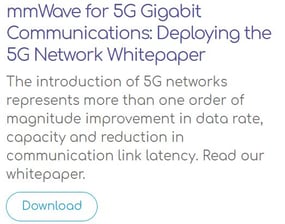Smart Cities will be filled with many applications that connect people, businesses, devices, and more. Everything we interact with on a daily basis, from public transport to grocery shopping has the potential to become more interactive, efficient, and intelligent. For example, the Internet of Things (IoT) promises to revolutionise businesses and services with sensors, data collection, and automation.
But a Smart City doesn’t work and can’t effectively progress if there isn’t a way for the public to access and use the connected services provided. As more of the things we interact with on a daily basis move online, our ability to connect as a population is becoming even more of a necessity. An important feature of Smart Cities is therefore to provide everyone with pervasive, high-quality access to WIFI anywhere in a connected city.
What is public access WIFI?
Public WIFI is an access technology that allows people within a city to plug into the core internet network. It is usually provided by local government, who implement high-quality WIFI coverage over a certain area, either with unlimited access or a login requirement.
This is absolutely essential as we develop Smarter Cities because in many cases the correct technology infrastructure to enable 4G or 5G consistently across large areas doesn’t exist, lowering the connectivity quality and accessibility in many areas.
What are the applications of public WIFI in a smart city?
Overall, public WIFI will enable better internet access in crowded areas, a more consistent and all-pervasive WIFI service across a city, and more efficient and relevant public services. Without public access, people can only access WIFI either in their homes, or in a public building that has chosen to provide it – the only real alternative is using mobile data, and in areas of poor service this often isn’t available.
For the 21st century where people are reliant on their mobile phones for many basic activities – including navigation, communication, and payments – this can be very limiting. Public WIFI would mean people in indoor and outdoor public spaces, from museums to sports fields to tourist destinations, would have open access to decent data speeds enabling them to use any smart or online services in the area.
Introducing public access WIFI is therefore beneficial to local residents and workers, extremely useful for tourists, and can improve the functionality of all connected services that are publicly available and city life as a whole.
Local governments and communities can also make use of this service for marketing and communication purposes through smart apps and devices. For example, they could provide more digital content and interactive, personalised content to large groups of people, such as push notifications about events in the local area or traffic updates.
What are the advantages and disadvantages of free public WIFI?
Benefits
The overarching benefit of public WIFI is that everyone can get high-quality access to the internet within that city. This will improve a city’s well-being and economic development, promoting tourism, improving leisure, business services, and council services.
Public WIFI is especially beneficial in times where the population density is increased, such as during a concert or New Year’s Eve. Mobile access quickly reduces in quality when there are very large crowds, but public WIFI can address areas or times of poor coverage easily.
Mobile operators often provide a network assuming a certain threshold of people in a certain area, and their service isn’t designed to support larger crowds than this. Public WIFI is able to offload this pressure on mobile access by giving an alternative network connection for a proportion of people.
Therefore, another benefit of public WIFI is that it can be complementary to other connectivity technologies. The alternative for dealing with increased internet usage, such as rare times of crowd density or connected devices, would mean operators would have to ‘over-provide’ their network, resulting in a huge increase in telephone masts in closer proximity to cities.
Instead, if public access WIFI is managed correctly it can be used in tandem with existing technology, acting as an alternative to mobile coverage when connections are poor or overpopulated.
Read more in our Whitepaper
Disadvantages
There are a few potential disadvantages associated with public access WIFI, but they can be addressed easily and with careful consideration during implementation.
If a public network isn’t carefully managed, private content can potentially be made open to the public. However, as long as the right security measures are put in place there is no possibility of this happening.
There also needs to be consideration made to public privacy. On one hand, public connections and Smart Cities could be a valuable tool for improving the city’s security, but it needs to be balanced with the guarantee of people’s personal privacy.
How will public access WIFI be deployed?
The level of performance needed for public WIFI to work effectively requires high-speed, reliable and cost-effective communications technology – mmWave wireless distribution nodes are an innovative solution that meet these requirements.
These work as access points which link the core internet to devices using WIFI as access technology. The core technology already exists, and so the access points would need to be deployed at a close enough range and in various locations across a city to enable a high-quality service.
This kind of connection would typically be done with fibre in more limited areas, but for such a large range application this would be difficult – due to rough terrain, obstructions, or intrusive digging and building – and expensive. Wireless mmWave can therefore act as an equally effective supplement to this technology as it can be installed where fibre can’t, with simplified and cost-effective deployment onto existing infrastructure.
Blu Wireless’s mmWave technology can therefore establish high-quality connections where they’re needed in a city, enabling the all-pervasive public WIFI that smart cities need. This will be a key technology in spurring on Connected Cities, progressing economic development, and digitalising the way we live and function every day.










